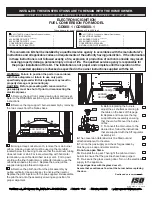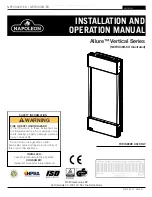
4
SVPD Programming Guide
www.eaton.com/lightingsystems
Making Adjustments to Default Scene Levels
When adjusting scene level defaults, follow the below sequence for the best results:
Step 1:
Disable daylight dimming control in fixtures not in active daylighting areas
Step 2a:
Set the occupancy detection scene level
Step 2b:
Set the unoccupied scene level
Step 2c:
Set the energy saver scene level (optional)
Step 1: Disable daylighting dimming (optional)
Prior to adjusting any scene levels, disable daylight dimming for fixtures located in non-daylight zones.
1. Stand directly below the fixture and point the remote at the integrated sensor.
2. Press the “SET” button. The sensor’s red LED should flash rapidly.
3. Within 5 seconds, press the “75” button. The LED should continue to flash rapidly.
4. Press the “10” button. The LED should flash three times with a short blink pattern.*
5. Repeat for additional fixtures as needed.
ote:
N
to re-enable daylight dimming, follow steps 1 through 3. At step 4, press the “5” button. The LED should flash three times with a long blink pattern.
(The occupancy detection scene level, unoccupied scene level and energy saver scene level will be restored to default levels when
this setting is changed.)
Step 2: Set scene levels
Configure the scene levels in the following order for best results:
a. Set the occupancy detection scene level
b. Set the unoccupied scene level
c. Set the energy saver scene level (optional)
The occupancy detection scene levels, unoccupied scene level, and energy saver scene levels are all set using the same procedure with the
exception of the button being pressed to save the scene. Before you begin:
• Make scene level adjustments at night (or use shading) with only electric light present in the space. This is critical to operation of daylight
dimming and overall performance.
• When making adjustments to any scene turn ON and adjust the light level of all lighting before saving the scene to each individual fixture
to ensure uniform results.
• Make adjustments when there is no motion activity. The sensor may not capture the proper daylight level if its LED is flashing.
Repeat the steps below for each scene. Complete configuration of the scene for all fixtures before moving on to the next scene.
1. Turn all lighting in the space ON or OFF in the desired pattern for the scene by using the remote’s (ON/OFF) button.
2. Use the remote’s raise and lower buttons to adjust all of the fixtures in the space to the desired light level for the scene.
3. Stand directly below a fixture and point the remote at the integrated sensor. Stand still for 10 seconds and verify that the sensor’s red
LED is not flashing.
4. Press the “SET” button. The sensor’s red LED will flash rapidly.
5. Within 5 seconds, press the desired scene button. The LED will blink steadily for 5 seconds.
6. Repeat steps 3 through 6 until the setting is saved at all fixture locations.
Scene
Button
Occupancy detection scene
"Occ"
Unoccupied scene
"UnOcc"
Energy saver scene
"ES"

























